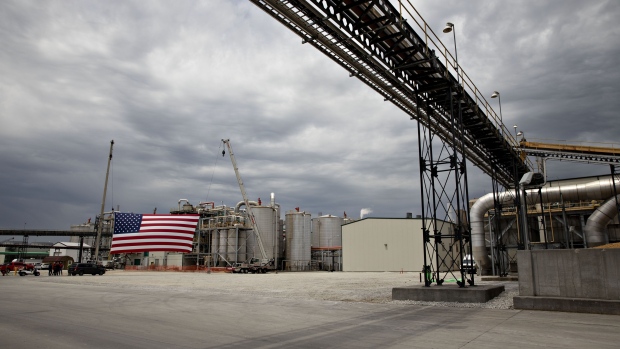Feb 16, 2021
Once Wary Ethanol Market Hails Potential of Clean-Fuel Policy
, Bloomberg News

(Bloomberg) -- Ethanol producers that once opposed California’s Low Carbon Fuel Standard are now wondering how fast the emissions-cutting policy can expand across the U.S.
That question and how a broader LCFS might co-exist with the Renewable Fuel Standard, the federal mandate on blending biofuels with gasoline, will be in focus at a virtual three-day ethanol conference kicking off Tuesday.
Interest in California’s market-based program, which brings together renewable fuel and electricity stakeholders in a goal to cut vehicle emissions 20% by 2030, is rising. OTC Direct, an online trading platform launched in December to make RFS-tied biofuel blending credits more liquid, added LCFS weeks after starting in response to customer demand.
“We are particularly interested in the LCFS program and the potential for it to be more widely adopted across the U.S. and Canada,” Julian Anstes, head of London-based OTC Direct Markets Ltd. who developed the platform, said in an interview. The trading venue includes big oil refiners and renewable fuel producers.
Ethanol companies were largely opposed to LCFS a decade ago amid disagreement over the carbon impact of ethanol. Today, there is broad support for a potential national program as a complement to the Renewable Fuel Standard. The issue will be among topics discussed at this week’s virtual National Ethanol Conference.
Todd Becker, chief executive officer of U.S. ethanol producer Green Plains Inc., sees the California model spreading “across several states, if not across the United States and globally as well.”
While Green Plains has a couple of plants that ship into California and can take some advantage of the LCFS, the Omaha, Nebraska-based company needs to see greater national adoption. Becker told analysts last week that any new policy should take into account declining carbon intensity scores for ethanol plants, including all the way down to “zero or negative CI.”
“You are going to see red states and blue states all kind of move to some of these standards and potentially move to a national standard,” he said.
For a map of U.S. states considering LCFS, see: U.S. Biofuels Outlook: From Corn to Cooking Oil (page 12)
Meanwhile, oil refineries in the western U.S. have been busy converting into biofuel plants as part of an explosion in interest of so-called renewable diesel, which now accounts for about 17% of California’s on-road diesel consumption.
“The effectiveness of the LCFS is illustrated by the fact that two thirds of U.S. renewable diesel consumption occurs in California, despite the vast majority of current production capacity being located in Louisiana,” BloombergNEF oil and biofuels analyst Daisy Robinson said.
READ MORE: Renewable Diesel: A Green Light for Refiners
Last month, National Biodiesel Board CEO Donnell Rehagen said a national LCFS effort would be welcome but likely a “long slog.” In the meantime, the group will be looking to possibly support state and regional efforts that might be a bit more focused, he said.
“Probably one of the biggest challenges for a national LCFS is all of the consistencies that would factor in and play into that,” Rehagen said.
©2021 Bloomberg L.P.





